PinotFile: 11.30 September 14, 2018
|
Knudsen Vineyards 2016 Pinot Noir: Beguiling Wines Reflect Dundee Hills Terroir
Bill Stoller, Stoller Estate
Among the six sub-AVAs of the Willamette Valley, Pinot Noir wines from the Dundee Hills are the most recognizable for me. The wines from the Dundee Hills are distinctive enough to be identified on a regular basis. The volcanic Jory soils over sedimentary sandstone typically impart alluring red cherry and red raspberry fruit flavors along with notes of sassafras, pomegranate, cola, baking spices and forest floor, paired with floral aromatics, good acidity and soft textures. The wines are nuanced, delicate and fruit-centric. The 6,490-acre Dundee Hills AVA was approved in 2005 and the Dundee Hills Winegrowers Association was formed in March 2006. The original name proposed for the AVA was “Red Hills,” referring to the red oxide stained volcanic soils, but was changed to avoid possible confusion with other domestic and international “Red Hill” or “Red Hills” viticultural regions. Some of Oregon’s pioneering vineyards were established in the Dundee Hills including Knudsen Vineyards, first planted by Cal Knudsen in 1972. By 1975, the vineyard, spread over 60 acres, was the largest in Oregon. The vineyard today consists of 130 planted acres and is a mix of old vine blocks established in the 1970s and the 1980s, and newer high-density blocks planted with Dijon clones in the 1990s, and 2000-2007.
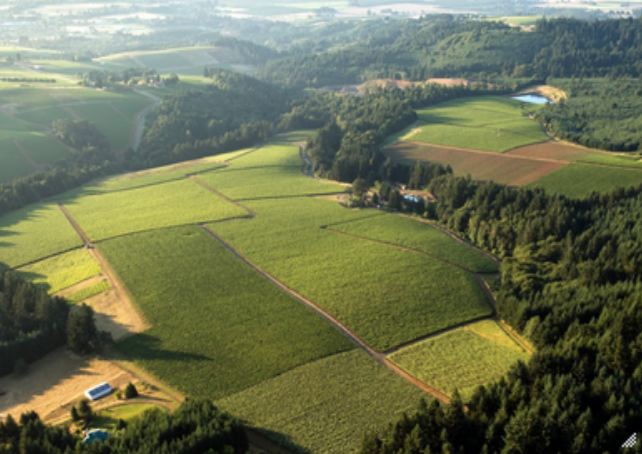 Cal Knudsen passed away in 2009, but Page Knudsen Cowles, now Managing Director, along with her three brothers, is carrying on his legacy by producing Knudsen Vineyards Pinot Noir and Chardonnay. The wines are vinified at Argyle Winery by winemaker Nate Klosterman, a protege of Rollin Soles. The first Pinot Noir was released from the 2012 vintage and a Chardonnay followed the next year. I have reviewed every Pinot Noir and Chardonnay produced at Knudsen Vineyards including the two 2016 Pinot Noirs sampled for this issue. The wines have been consistently outstanding, awarded scores in the 93-96 range since the 2013 vintage. But even more significant is that the wines are always true to their Dundee Hills terroir. This is admirable since there are many variables involved in wine production including the winemaker’s hand. In the case of Knudsen Pinot Noir, the taster is able to identify the “land,” more than the “hand.” The wines are simply authentic. The 2016 Knudsen Vineyards Dundee Hills Pinot Noir and 2016 Knudsen Vineyards Dundee Hills Reserve Pinot Noir were released to email list members on August 14 and became available for purchase online at www.knudsenvineyards.com on September 5. Flat rate shipping of $15 is available for orders of four or more bottles through September using the code PINOT15. The 2016 growing season was the third of three consecutive warm growing seasons in Oregon. Bud break was early and a brief heat spell at bloom condensed flowering, resulting in a smaller fruit set and clusters. July and August had fewer heat spikes than the preceding two vintages. The result was an exceptional vintage in Oregon. Tasting is available by appointment with two weeks advanced notice. Visit the website to schedule a tasting.
2016 Knudsen Vineyards Dundee Hills Willamette Valley Pinot Noir 14.1% alc., pH 3.62, TA 0.54, 500 cases, $55, screw cap. Fruit was sourced from three vineyard blocks featuring clones 777, 667 and Pommard. Harvest Brix 23.6º. Aged 16 months in French oak barrels, 20% new. · Moderately light garnet color in the glass. Quintessential Dundee Hills Pinot Noir featuring waves of red cherry and red raspberry fruit aromas and flavors, complimented by tones of sandalwood, baking spices and fertile earth. I swear I could taste an “iron minerality” in this wine. Impeccably balanced, with a deft touch of oak, empowering juiciness and a long cherry-fueled finish. Intoxicating in a good way. Score: 94
2016 Knudsen Vineyards Dundee Hills Willamette Valley Reserve Pinot Noir 14.1% alc., pH 3.55, TA 0.55, 200 cases, $70, screw cap. Fruit sourced from three blocks that revealed themselves to be special and distinct. 100% clone 777. Aged 16 months in French oak barrels, 35% new. · Moderate garnet color in the glass. A totally different wine from the regular Willamette Valley bottling. Darker fruited in a mid weight style with aromas and flavors of black cherry, pomegranate and black raspberry framed by a touch more oak. Compared to the regular Dundee Hills bottling, there was more extraction, a little more tannic backbone, and a longer, deeply aromatic finish. A luscious texture really enhanced the pleasure. Even better when tasted several hours after opening. Score: 96

Gary Farrell Wines Continues a Consistent Record of ExcellenceSince winemaker Theresa Heredia took over the helm at Gary Farrell Vineyards & Winery in 2012, the wines have gone from very good to outstanding. With adept corporate management by owners The Vincraft Group, the winery has gradually expanded its vineyard sources, and now offers vineyard-designated Pinot Noir and Chardonnay wines from the Santa Maria Valley, the Russian River Valley, the Sonoma Valley, the Petaluma Gap and the Fort Ross-Seaview AVAs. There are very few California producers of Pinot Noir and Chardonnay that can lay claim to such an extensive array of cherished wine grape sources that include Rochioli, Allen, Ritchie, Gap’s Crown, Bien Nacido, Olivet Lane, Bacigalupi, Hallberg, Martaella, Toboni, Fort Ross and Durell vineyards. Theresa so impressed me with her accomplishments that I chose Gary Farrell Vineyards & Winery as my “2016 Winery of the Year.” Read my extensive coverage of the winery in late 2016 at www.princeofpinot.com/article/ 1898/. Nothing has changed to alter my opinion, and, in fact, the wines have even been better in the last two (2015 and 2016) vintages.
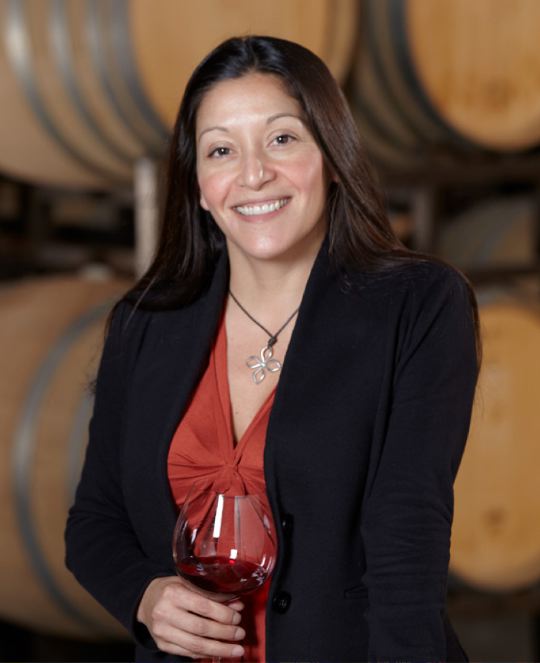 Join the winery’s mailing list at www.garyfarrellwinery.com. Or, if you don’t believe my accolades, arrange a visit to the remodeled Gary Farrell Tasting Room and taste the wines for yourself. The one feature of the wines that will stand out is the bright acidity, giving the wines alluring vibrancy and juiciness.
2016 Gary Farrell Bien Nacido Vineyard Santa Maria Valley Pinot Noir 13.3% alc., pH 3.38, TA 0.69, 719 cases, $70. Released September 2018. The winery has sourced fruit from this vineyard for more than 20 years, and is one of the fortunate few to source some of the Pommard selection from the legendary Q Block, the most prestigious Pinot Noir block on this famous site. 20% whole cluster added to the fermentation tank. 4-day cold soak, regular punch downs and an occasional pump-over. 12-days of extended maceration, followed by 15 months of aging in French oak barrels, 40% new. · Moderately light garnet color in the glass. Welcoming aromas of Bing cherry, baking spices, mushrooms on the grill and fertile earth. Light to mid weight flavors of cherry and dark red berry with a touch of spice and nutty oak. Very charming, with an extremely long, sweet and juicy finish. Score: 93
2016 Gary Farrell Hallberg Vineyard-Dijon Clones Russian River Valley Pinot Noir 13.7% alc., pH 3.39, TA 0.67, 937 cases, $60. Released September 18, 2018. Clones 667 and 777. A small percentage of whole cluster. 4 to 7-day cold soak, 7-10 days post fermentation extended maceration, and aging for 10 months in French oak barrels, 40% new. · Moderately dark garnet color in the glass. Shy aromas of grilled dark fruits, sweet pipe smoke and wet earth. A full-bodied, big gulp of purple and black fruits, yet the wine is in balance without heaviness or flabbiness. the appealing texture is satiny and the intense boysenberry-themed finish really satisfies. I find that the dark color and rich fruit is typical for this vineyard. Theresa has been able to tame the fruit explosion as well as conceal the oak in the background. This is a terroir-driven wine that gives n exact expression of site. Score: 94
2016 Gary Farrell Toboni Vineyard Russian River Valley Pinot Noir 14.1% alc., pH 3.34, TA 0.71, 915 cases, $55. Released September 18, 2018. The Toboni Oakwild Ranch Vineyard is located in the Santa Rosa Plain, just south of the winery. Clones 115, 667, 777 and Pommard planted in 2001. A small percentage of whole cluster. 4 to 7-day cold soak, 7 to 10-day extended maceration, and aging for 10 months in French oak barrels, 40% new. · Moderate garnet color in the glass. Revealing perfume of cherry syrup, pomegranate, cola and a hint of pear. Intensely fruity on the mid palate and driving, succulent finish, featuring black cherry and blackberry fruit flavors. Some tannins show up on the mildly drying finish. Score: 92
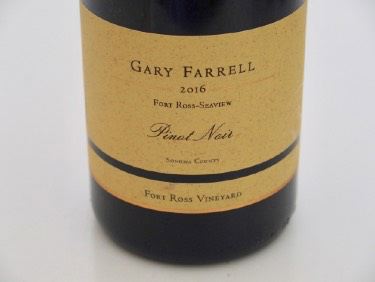 2016 Gary Farrell Fort Ross Vineyard Fort Ross-Seaview Pinot Noir 13.2% alc., pH 3.45, TA 0.72, 565 cases, $75. Release October 2018. Vineyard is located on a cool coastal ridge at 1200-1700 feet elevation and is one of the closest vineyards to the California coastline. Dijon clone 777 and Calera selection. 777 grapes de-stemmed, while the Calera grapes were delivered to tank with 50% whole cluster. 5-day cold soak, 13-day post fermentation extended maceration, and aging for 15 months in French oak barrels, 40% new. Moderately light garnet color in the glass. Reaching aromas of dark red · Moderately light garnet color in the glass. Reaching aromas of dark red cherry and berry, forest floor and tobacco. Strikingly flavorful on entry, featuring middleweight black cherry, black raspberry and spice flavors with a subtle savory earthy note. This wine flows across the palate like greased lightning, ending on a long cherry high note. Spirited, but ingratiating acidity adds freshness and vitality. Ready for prime time now. Score: 95
2016 Gary Farrell Rochioli Vineyard Russian River Valley Chardonnay 13.4% alc., pH 3.30, TA 0.67, 555 cases, $65. Released September 2018. This release brings together three blocks planted in 1974, 1995 and 2000, where some of the vines come from cuttings taken from the original mother block planted in 1968. Harvest Brix 22.5º. Gentle whole cluster pressed and fermented and aged 9 months on the primary lees in 35% new and 65% one to three-year-old neutral French oak barrels and 500-liter French oak puncheons. · Moderately light golden yellow color in the glass. Complex and exotic nose offering scents of lemon oil, alfalfa, crème brûlée and fragrant plants. A very indulgent and flavorful style, offering tastes of lemon creme, pineapple, applesauce and tropical fruits. The richness on the palate is balanced by bright acidity, making for an extremely special drinking experience. Score: 96
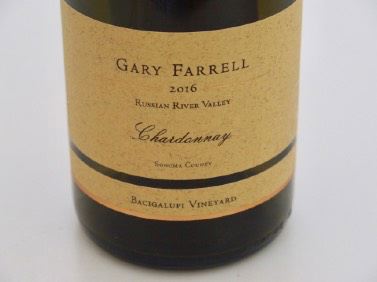 2016 Gary Farrell Bacigalupi Vineyard Russian River Valley Chardonnay 13.8% alc., pH 3.34, TA 0.62, 326 cases, $55. Released September 2018. The oldest vines that make up the original historic plantings are one of the main components of this Chardonnay blend. Harvest Brix 22.5º. Gentle whole cluster pressed and aged 9 months on the primary lees in a combination of 35% new and 65% one to three-year-old neutral French oak barrels and 500-liter oak puncheons. · Light golden yellow color with the slightest lime green tone in the glass. Outrageous aromatic explosion of cut apple, poached pear, lemon butter, citrus glee and righteous oak. Glorious flavors of yellow apple, lemon, pear and a hint of pineapple in a suave style that is like drinking mothers milk. This is a wine of impeccable balance that is highly refreshing, playing on Chardonnay’s best features. Still extraordinary when re-tasted two and three days after opening. Theresa’s magnum opus that flirts with perfection. Score: 98
Recently Tasted Pinot Noir & Chardonnay
Ryan Cochrane Wines, San FranciscoRyan Cochrane represents an aspiring winemaker success story. After he lost his job at an advertising agency in 2009, he pursued the lifelong dream of winemaking. He started very modestly, producing a barrel of Pinot Noir in 2010, and increased his Pinot Noir offerings and added Chardonnay, to bring his production to about 450 cases. I have been fortunate to sample Ryan’s wines since the 2012 vintage and have noticed a significant gradual improvement in quality. The three 2016 wines reviewed here are among his best to date and offer outstanding value as well. The wines are sold online at https://www6.cleverconcepts.net/ryancochranewines.com/purchase/ index.php. Some well-stored back vintages are available as well.
2016 Ryan Cochrane Solomon Hills Santa Maria Valley Pinot Noir 13.3% alc., 149 cases, $46. 25% 115, 40% 667 and 35% Pommard 5. 20% whole cluster fermentation. Aged 10 months in French oak barrels, 20% new. Bottled unfined and unfiltered. · Moderate light garnet color in the glass. The nose is giving, with pleasant aromas of cherry, walnut and cardamom. Striking mid weight raspberry fruited core with good length in the mouth and on the finish. Juicy, with good vibrancy and a hint of complimentary oak. The raspberry really leaps out in this wine, something I rarely encounter. Score: 92
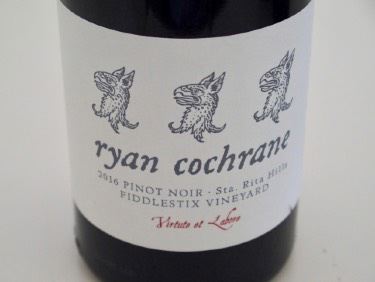 2016 Ryan Cochrane Fiddlestix Vineyard Sta. Rita Hills Pinot Noir 14.3% alc., 122 cases, $46. 60% 115, 20% 113, 20% 667. 15% whole cluster fermentation. Aged 10 months in French oak barrels, 20% new. Bottled unfined and unfiltered. · Moderate garnet color in the glass. Aromas of red and black cherry, dark chocolate and nutty oak. Vivid black raspberry and black cherry fruit flavors fill the mouth with goodness. A slightly savory earthy tone adds to the appeal. Tame tannins, with a satiny mouthfeel and a deft touch of oak in the background. Tasted twice with consistent results. Score: 93
2016 Ryan Cochrane Solomon Hills Vineyard Santa Maria Valley Chardonnay 12.5% alc., 192 cases, $36. 100% Dijon 96. Barrel fermented, 100% malolactic fermentation, aged 10 months with lees stirring in French oak barrels, 20% new. · Moderately light golden yellow color in the glass. Aromas of pineapple, lemon, brown butter and warm brioche lead off. Silky in the mouth with very bright acidity featuring edgy flavors of lemon, pineapple and pear underlain with a touch of toasty oak. This wine is for fans of crisp, acid-driven Chardonnay. Score: 91
Domestic Pinot Noir priced less than $40 is a wasteland of broken promises with few exceptions. Risking your money on these wines is like a blind date: it rarely turns out well. That said, I did meet my wife of 40 years on a blind date, so there is always that curiosity in the back of your mind. I bought the following five wines off the retail shelf based on no particular reason other than some familiarity with the winery. There was only one wine that I would consider purchasing again in this price range (Etude).
NV Noble Vines Collection 667 Monterey Pinot Noir 14.5% alc., $7.99 (Trader Joe’s). Produced and bottled by Noble Wines, Napa and Manteca. · Moderate garnet color in the glass. Aromas of black cherry, spice and a heavy dose of vanilla. The mid weight core of black cherry fruit is framed by oak-driven toast and tobacco flavors. Very simple, with a silky texture, and a hint of astringency and alcoholic warmth on the finish. Score: 85
2016 Averaen Willamette Valley Pinot Noir 13.8% alc., pH 3.69, TA 0.60, $19.95. Produced and bottled by Averaen Wines, Dundee, Oregon. Volcanic and marine sedimentary soils. Aged 10 months in oak. · Moderately light garnet color in the glass. Aromas of black cherry, mulch and turned earth build in intensity over time in the glass. Light to mid weight in style, featuring flavors of black cherry and blackberry with some oak in the background. Simple, with a somewhat shallow followthrough that exhibits some tannin. The wine finishes with a tart cherry theme. Score: 87
2016 BÖEN Russian River Valley Pinot Noir 14.3% alc., $27. Produced and bottled by BÖEN Wines, Napa, CA. Winemaker is Joseph Wagner. · Dark garnet color in the glass. The aromatics are not particularly appealing, offering scents of dark fruits, fertile earth, weathered oak and oak vanillin. A full-bodied style that is plush, soft and velvety on the palate, displaying purple and black fruit flavors with a heavy dose of dark chocolate and vanilla. A fruity wine in the Meiomi style, lacking vibrancy, and finishing slightly hot. Score: 86
2015 Brewer-Clifton Sta. Rita Hills Pinot Noir 14.0% alc., $35. · Light ruby red color in the glass. Shy aromas of red cherry, dusty rose petal and terra cotta brick. Light weighted, with flavors of red cherry and red berry with noticeable oak in the background. Good quenching acidity on the finish, yet the tannins stand out. The fruit and oak are out of balance in this wine. Score: 87
2016 Etude Grace Benoist Ranch Carneros Pinot Noir 14.2% alc., $36. Produced and bottled by Etude Wines, Napa, CA. · Moderate garnet color in the glass. Pleasing aromas of ripe dark cherry, cola and spice pick up interest over time in the glass. Silky and suave on the palate in a mid weight style with engaging flavors of black cherry, plum and spice and demure toasty oak in the background. Still fine when tasted the following day from a previously opened and re-corked bottle. Score: 90
This is the time of the year when wineries are offering their mailing list members an allocation of their fall releases. Through the years, I have been on a number of premium winery mailing lists often just to keep abreast of the industry. I looked at 20 winery email offerings from California and Oregon that appeared in my inbox over the past month. Here is a summary of my findings and some commentary: 1 The price of premium vineyard-designated Chardonnay varied from $52 to $150. The typical price was in the $65 to $75 range. 2 The price of premium vineyard-designated Pinot Noir varied from $42 to $110. The typical price was in the $75-$80 range. 3 There were four Pinot Noir offerings priced at $100. 4 Values are scarce but still available. Anthill Farms 2016 Pinot Noir offerings ranged from $38-$52. WesMar 2016 Pinot Noir releases ranged from $42-55. 5 Domaine Serene is at the top end of all wineries, releasing their latest Coeur Blanc White (white Pinot Noir) at $95 and the 2014 Monogram Pinot Noir at $275 a bottle! 6 Incentives for consumers include reduced or free shipping for multiple bottle purchases, and reduced pricing by some wineries for wine club members. Some wineries sell exclusively to mailing list members, but these so-called “hostage wineries” are becoming a rarity. Vigilant attention to the retail market (ie www.winesearcher. com) and the PinotFile will turn up bottlings at relatively reasonable prices. 7 Wine sticker shock is becoming more prevalent and we may not have seen the end of price escalation. Joe English, writing in KATU News, https://katu.com/news/local/trump-tariffs-could-squeeze-local-wineries, reported that Trump’s tariffs could increase the cost to wineries to buy bottles and cardboard boxes as much as 25 percent. In addition, wineries are faced with finding and keeping a steady labor team who are demanding more salary in the current competitive milieu. 8 Excise taxes on wine vary by location. Federal law requires that federal excise taxes be charged uniformly across the US, but states have created their own excise taxes that make the total tax burden different from state to state. Excise taxes are paid by the producer or retailer and not directly by the consumer but these excise tax costs are passed on to the consumer. Obviously, then, it makes a difference where you buy your wine.
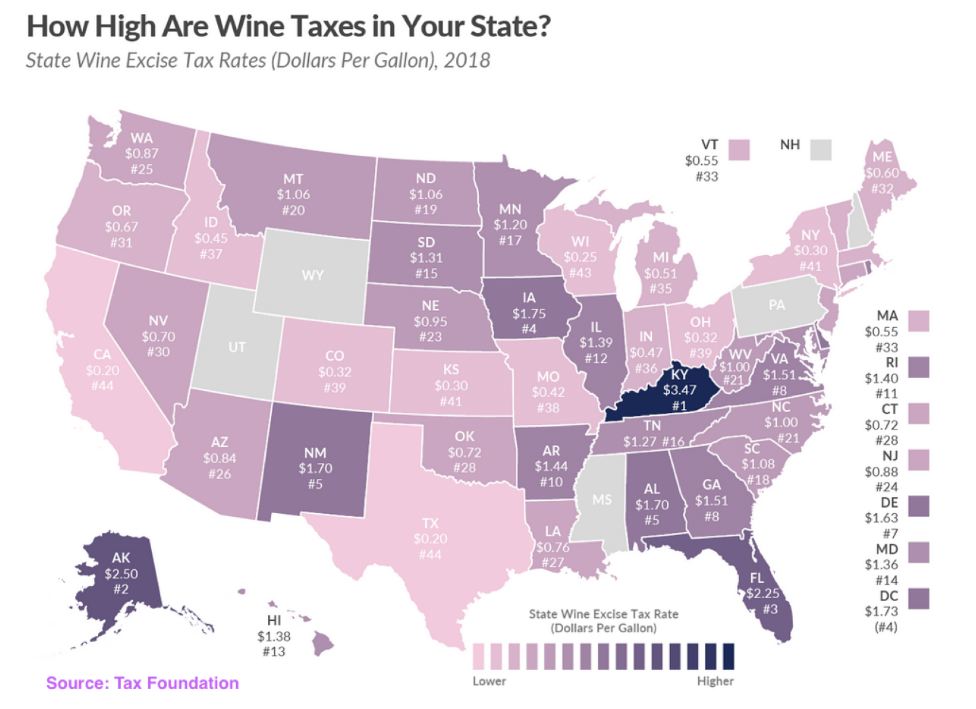
Picpoul: An Offbeat Wine Grape Variety That Grabbed My AttentionPicpoul goes by several synonyms depending on where it is planted including: Piquepoul Blanc, Avello, Avillo, Fehrer Piquepol, Folle blanche (Loire Valley), Languedocion, Picapolu, Picapolla (Spain), Picapulla, Picpouland, Picpoul Blanc (US), and Picpoul de Pinet. The grape is probably native to the Languedoc region of Southern France where it enjoys its greatest popularity. More than 90% of all plantings in France are in Languedoc’s Picpoul de Pinet AOC. The name, Piquepol, translates as “lip stinger” chosen because of the high acidity of this grape.
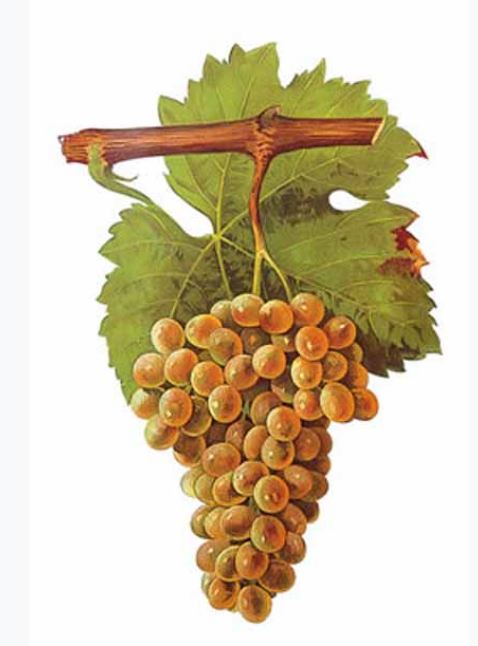 There are actually three versions: Picpoul Blanc and Picpoul Gris produce white wines in the Languedoc Roussillon region and are blended in Châteauneuf de Pape in the Rhone as one of the thirteen allowed grape varieties, and Picpoul Noir which is a red version used infrequently as a blending grape in the Southern Rhone Valley (Gigondas). There are small plantings in the Central Coast of California, with the largest at Tablas Creek where it has been bottled as a single varietal since 2003 and also blended in Espirit de Tablas Blanc. Picpoul has been successfully grown in southern Arizona, the Red Mountain AVA of eastern Washington state, Texas Hill Country and High Plans AVAs of Texas, Lodi, Sonoma and Paso Robles. In California, Bonny Doon and Adelaida have produced Picpoul wine. The grape was planted in Australia in 2013. The grape is a challenge to grow because it pushes early and is susceptible to frost and powdery mildew, as well as ripening late. In successful vintages, the grape produces high yields. Because of its high acidity, Picpoul has been known as a good match for oysters. Grown domestically, the grape retains good acidity without excess and displays more tropical lushness. How did the grape attract my attention? I was strolling the aisles at a local wine retailer (HiTime Wine Cellars in Costa Mesa, CA), looking at white Rhone varietal blends (a favorite of mine). I saw the 2017 Gramercy Cellars Picpoul from Los Oidos Vineyard in the foothills of the Blue Mountains in Walla Walla, Washington, and languishing on the shelf at a SRP of $15.98. I remembered that this 8,000-case winery located in Walla Walla was known for Syrah since I had visited Walla Walla several years ago, and was familiar with the founder and winemaker, Greg Harrington MS. Picpoul was first produced by the winery in 2013. On a whim, I bought a bottle and tried it a few days later. I was so taken by the wine that I immediately bought another half case. The wine is not shown for sale on the winery website. There are a few retail sources at www.winesearcher. com.
2017 Gramercy Cellars Walla Walla Washington Picpoul 12.2% alc., $15.98. Fermented and aged in stainless steel with no malolactic fermentation. · Practically clear in the glass. Engaging aromas of pear, white peach, spice and tropical flora. Light in weight, but highly flavorful, offering tastes of pear and white peach and a lemon-lime driven finish. Adequate, but not ostentatious acidity, slightest drying tannins, and a very dry finish. This wine combines the attributes of Pinot Blanc and Malvasia Bianca with a tropical Viognier attitude. A superb option for “ABC” wine drinkers. Score: 90
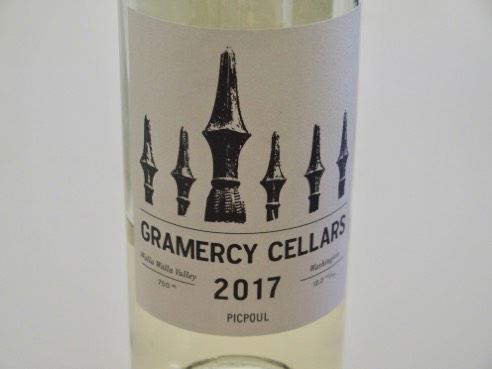
2012 Siduri Pinot Noir Six Years Later: Suspended in TimeAdam Lee, Siduri’s winemaker, is kind enough to send me for review two bottles of the Pinot Noirs he produces each vintage. This gave me the rare opportunity to re-taste a large number of wines several years later and compare my findings with previous notes and scores. What I found is that many wines were suspended in time, that is, under screw cap closure they had not changed appreciably over the six year period and most wines had not yet developed tertiary characteristics typically associated with aging. My review notes and scores were almost identical (I did not look at my previous scores and reviews before the tasting) except for a couple of wines and this was probably due to bottle variation and or loss of appeal with some aging. I felt that the single vineyard wines could easily continue to offer pleasure for another six years.
2012 Siduri Willamette Valley Pinot Noir Oct 27, 2013 87, August 2018 86 Note: Drinkable but a straightforward and simple cherry-driven wine that doesn’t hold your interest. 2012 Siduri Hawk’s View Vineyard Willamette Valley Pinot Noir April 19, 2014 92, August 2018 89 Note: Some subtle tertiary changes with notes of leather, cigar box, game and black tea have developed. Has not gotten better as I previously predicted. 2012 Siduri Shaw Mountain Vineyard Willamette Valley Pinot Noir October 27, 2012 88, August 2018 90 Note: Very appealing now with waves of fresh black cherry and blackberry fruit flavors, a silky texture and admirable balance. 2012 Siduri Muirfield Vineyard Willamette Valley Pinot Noir April 19, 2014 90, August 2018 89 Note: Aromatically alive and bright on the palate, but the finish is way too astringent. 2012 Siduri Arbre Vert Vineyard Willamette Valley Pinot Noir April 19, 2014 89, August 2018 91 Note: This wine packs a lot of flavor although light in color and the juicy cherry fruit is appealing now.
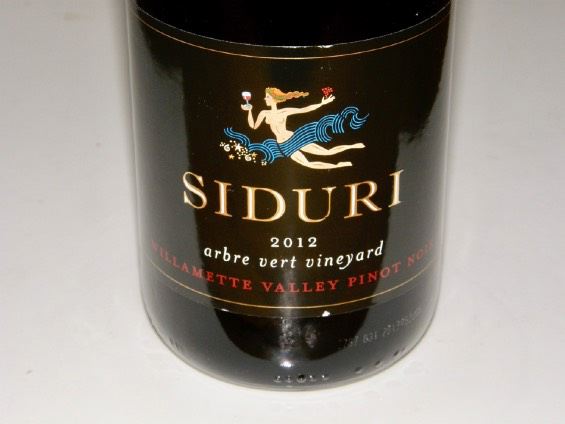 2012 Siduri Santa Lucia Highlands Pinot Noir October 27, 2013 88, August 2018 88 Note: Simple, fruitdriven, very ripe but balanced and still fresh. 2012 Siduri Sta. Rita Hills Pinot Noir April 19, 2014 90, August 2018 86 Note: Probably an off bottle as nose delivered scents of prune, mowed warm grass and fig and the flavor profile was unpleasant with a noticeable burnt, vegetal overtone. 2012 Siduri Russian River Valley Pinot NoirOctober 27, 2013 88, August 2018 88 Note: Fruit veers to very ripe side with plenty of black cherry sap, and a slight sense of alcohol on finish. 2012 Siduri Sonatera Vineyard Sonoma Coast Pinot Noir April 19, 2014 89, August 2018 89 Note: Over ripened fruit detracts and oak veers its head. 2012 Siduri Pratt Vineyard-Sexton Road Sonoma Coast Pinot Noir October 27, 2013 94, August 2018 92 Note: Significant toasty oak but otherwise superb. 2012 Siduri Hirsch Vineyard Sonoma Coast Pinot Noir April 19, 2014 91, August 2018 91 Note: Pleasing still with fruit that aspires to a higher calling. The astringent finish detracts slightly. 2012 Siduri Lingenfelder Vineyard Russian River Valley Pinot Noir April 19, 2014 90, August 2018 91 Note: Quintessential Russian River Valley in character with a soothing texture from judicious tannins. 2012 Siduri Ewald Vineyard Russian River Valley Pinot Noir April 19, 2014 90, August 2018 89 Note: A potent, very ripely fruited wine that is about as big as Pinot gets. That said, the balance is pretty good with only a hint of alcoholic warmth on the finish. Have to score this wine high for its exuberant fruit reflecting a warm site. 2012 Siduri Bucher Vineyard Russian River Valley Pinot Noir October 27, 2013 88, August 2018 88 Note: A little too earthy, vegetal, oaky and smoky for my taste. 2012 Siduri Van der Kamp Vineyard Sonoma Mountain Pinot Noir April 19, 2014, 91, August 2018 90 Note: Somewhat woody/oaky nose prevents higher score. 2012 Siduri John Sebastiano Vineyard Sta. Rita Hills Pinot Noir April 19, 2014 94, August 2018 93 Note: My favorite wine of this vintage except Pisoni Vineyard (not reviewed again here). 2012 Siduri Cargasacchi Vineyard Sta. Rita Hills Pinot Noir October 27, 2013 94, August 2018 92 Note: More tannic over time detracts slightly.
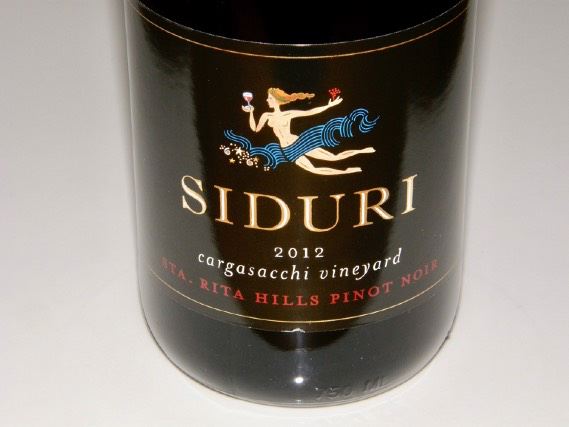 2012 Siduri Rosella’s Vineyard Santa Lucia Highlands Pinot Noir April 19, 2014 88, August 2018 91 Note: Oak and tannins became integrated over time and the fruit had picked up intensity. Slight alcohol on finish. 2012 Siduri Soberanes Vineyard Santa Lucia Highlands Pinot Noir April 19, 2014 90, August 2018 92 2012 Siduri Sierra Mar Vineyard Santa Lucia Highlands Pinot Noir October 27, 2013, 93, August 2018 92
Pinot BriefsNew West Sonoma Coast AVA Approval on Horizon Elin McCoy recently wrote an article about the West Sonoma Coast, https://www.bloomberg.com/news/articles/2018-08-31/california-s-edgiestriskiest-wine-region-is-about-to-get-a-new-name, a 51-mile-long piece of land also known as the “true Sonoma Coast,” and the “far Sonoma Coast.” This region is home to some of California’s best Pinot Noir vineyards. Winegrower members of the West Sonoma Coast Vintners in this region have been trying for several years to get approval for the “West Sonoma Coast” AVA to distinguish it from the very large “Sonoma Coast” AVA, and they expect official acceptance by early 2019. The new West Sonoma Coast AVA would encompass the Fort Ross-Seaview AVA and Green Valley AVA as well as the Annapolis, Freestone, Occidental and Sebastopol Hills regions.
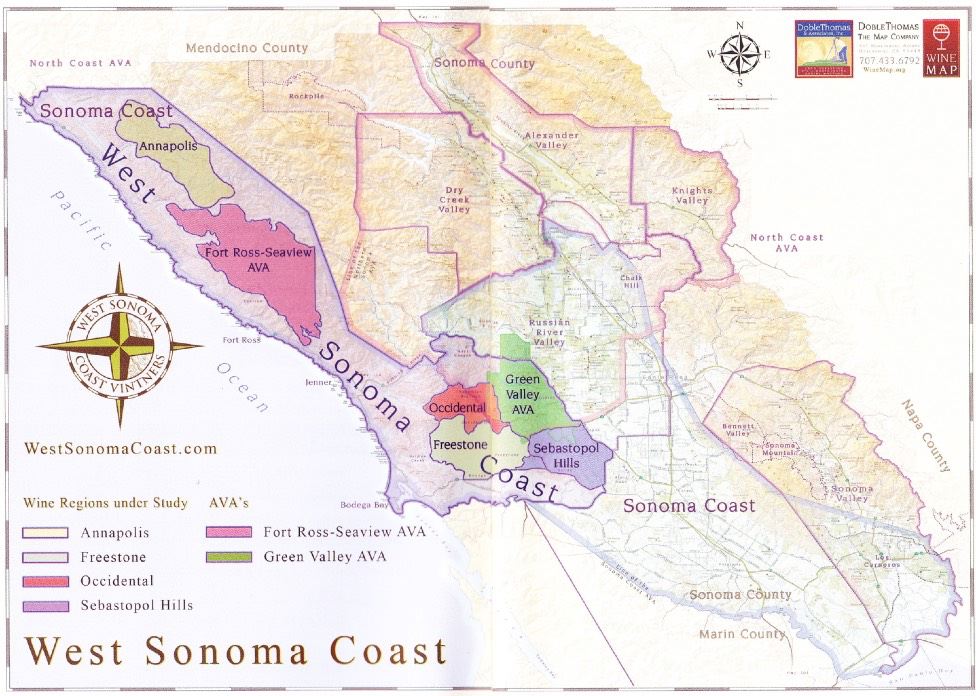 Stony Hill Vineyard Sold The iconic Stony Hill Vineyard has been bought by the Hall family, owners of Long Meadow Ranch. Stony Hill Vineyard has been owned by the McCrea family over three generations and is famous for its Chardonnay, Riesling and Gewürztraminer.
 New Book: Flawless: Understanding Faults in Wine Author Jamie Goode is one of our best wine experts and writers and I have collected all of his books. This book is said to be written more for the wine trade, but wine connoisseurs will undoubtedly find it educational. Besides covering all the main faults, some taints such as smoke taint and cork taint are also included.
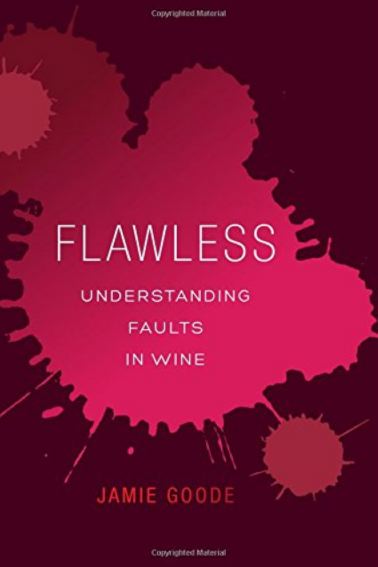 The Donum Estate Building New Winery A new roughly $6 million winemaking facility on the Donum property is expected to be finished by the end of 2018. The Donum wines are produced at Santa Rosa’s Punchdown custom crush facility, but it is expected that the winery will handle all production in 2019. A new tasting room opened at the estate in late 2017 and guests can also walk through the vineyards featuring sculpture displays. The Donum Estate currently has 130 acres in Carneros, 20 acres in the Russian River Valley, and 9 acres in Anderson Valley. Most recently, a 100-acre site was acquired in the Sonoma Coast and plans are afoot to plant 20 acres, called Platt Ranch. Most Donum Pinot Noir and Chardonnay production is sold directly to consumers. Visit www.thedonumestate.com. Sonoma & Oregon lead DTC Sales Change in First Half of 2018 According to Wines & Vines, https://www.winesandvines.com/news/article/202959/Sonoma-DtC-Wine-Shipments-Surpass-Napa, Sonoma wineries shipped 877, 795 cases DTC in the first six months of 2018 which is a 29% increase compared to the first half of 2017. Oregon saw case volumes shipped DtC rise 26% in the first half of 2018.
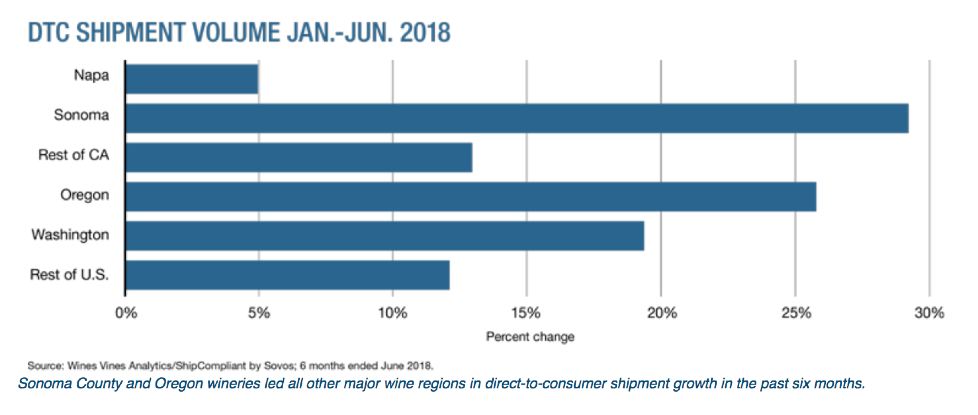 Louis M. Martini Restoring Historic Winery Louis M. Martini Winery, one of Napa Valley’s founding wineries at the end of Prohibition, is restoring their historic 1933 winery and planning on a scheduled opening in March 2019. Architect Howard Backen is seeking to preserve the building’s unique structural elements while creating an atrium to draw guests into the open floor plan. The building will have 30-foot-high glass alls with views into the barrel cellar, a demonstration dining room, an underground cellar with private wine libraries and a range of immersive Cabernet Sauvignon experiences. The adjacent Martini Park will feature a sycamore grove with tables and private cabanas for al fresco wine service. Update on Privé Vineyard The property and winery are still for sale but owner Tina Hammond tells me they have not found the right buyer yet. In the meantime, the winery is happy to welcome new members to their wine family. Last week, I opened a 2016 Privé Vineyard le nord Chehalem Mountains Pinot Noir and it was glorious. Visit or join the mailing list at www.privevineyard.com.
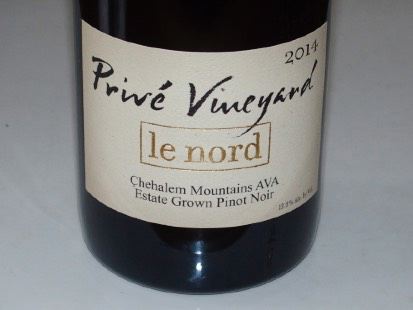 Appointment-Only versus Public Wineries by Region
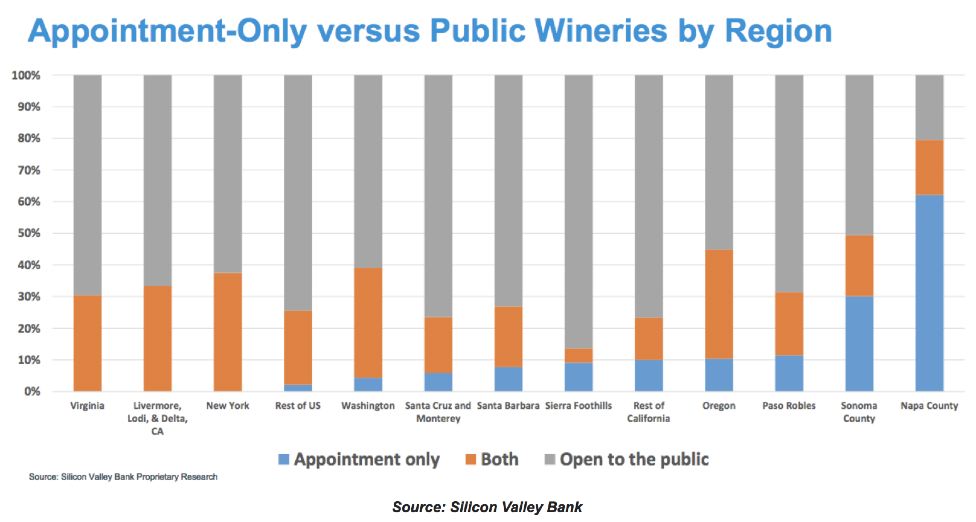 Book: Wine Grape Varieties in California I came across this excellent book recently. It was published in 2003 and authored by ten scholars either at UC Davis or part of the University of California Cooperative Extension Program. It is a reference book that was the first comprehensive wine grape variety publication covering all wine growing regions of California. Organized by grape variety, each section includes a discussion of the wine grapevine structure and terms that you often hear at wineries but never understood such as peticle, node, peduncle, rachis and pedicel. Also included are ripening periods, regional ripening dates, proper rootstock selection and appropriate trellis systems. There are valuable illustrations as well as photographs of clusters on the vine and leaves to show morphology. Minor wine grape varieties are also included in a summary format. A few interesting factoids about Chardonnay in the book: In 1960, there were an estimated 150 acres planted and by 2000, 103,491 acres planted, becoming the most widely planted wine grape variety in California. Besides the well-known Wente and Dijon clones, the Chardonnay musqué selections include Rued, See’s, Spring Mountain and Sterling. There are nearly 100 clones and sub-clones available. Since it is one of the first varieties to begin growth in the spring, it is susceptible to frost injury. Chardonnay is also susceptible to powdery mildew and Pierce’s disease. A few interesting factoids about Pinot Noir in the book: It is the oldest cultivated variety of genus Vitus and was described by Roman authors in the 1st century. Early bud break puts it at risk for spring frost. There are more clones of Pinot Noir than any other wine grape variety and most are from France. In 2003, there were 50 selections commercially available as FPS-registered selections but this has certainly increased since then. Pinot Noir is susceptible to bunch rot, Pierce’s disease and thrips. $25 on Amazon.
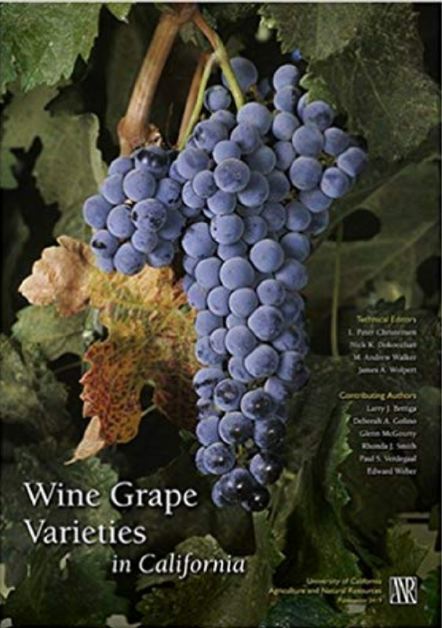 Proposition 65 Warning The State of California lists substances known to cause cancer, birth defects or reproductive harm in Proposition 65, also called the Safe Drinking Water and Toxic Enforcement Act. Alcohol is one of the substances. The Proposition was enacted in 1986 and led to back label warnings on wine bottles. On August 30, 2018, new more detailed and complex regulations took effect and businesses must be vigilant to remain in compliance. California DTC shipments must include Prop 65 warnings, whether the wine is coming from inside or outside the state. If the wine container or wine shipment containers contain BPA (tin in bottle caps for example), then an alcohol warning and a Prop 65 warning must be included on the outside or inside the box where the consumer can easily see and read the warning statements: WARNING: This product can expose you to chemicals including Bisphenol A (BPA), which are known to the State of California to cause birth defects or other reproductive harm. WARNING: Drinking distilled spirits, beer, coolers, wine and other alcoholic beverages may increase cancer risk, and, during pregnancy, can cause birth defects. The warnings should also be posted in the winery’s tasting room and on the website. Read more at www.compli-beverage.com. Aerators of Little Value for Domestic Pinot Noir I have always been skeptical of the value of aerators for most domestic Pinot Noir wines. Nearly all domestic Pinot Noir produced today is ready to drink upon release. The active swirling of wine in a glass suitable for Pinot Noir accomplishes what an aerator does. I was at a winery a while back and they used a Vinturi wine aerator ($25) and it seemed to show off the Pinot Noir better than when poured directly from the bottle. I bought one to test at home during my tastings but did not find that it made an appreciable difference compared to swirling the wine in a glass. I receive marketing material about all sorts of aerators, some costing triple digits, but I do not believe they are of significant value for domestic Pinot Noir. If you really want to aerate a Pinot Noir, I would decant it.
The Prince’s Style
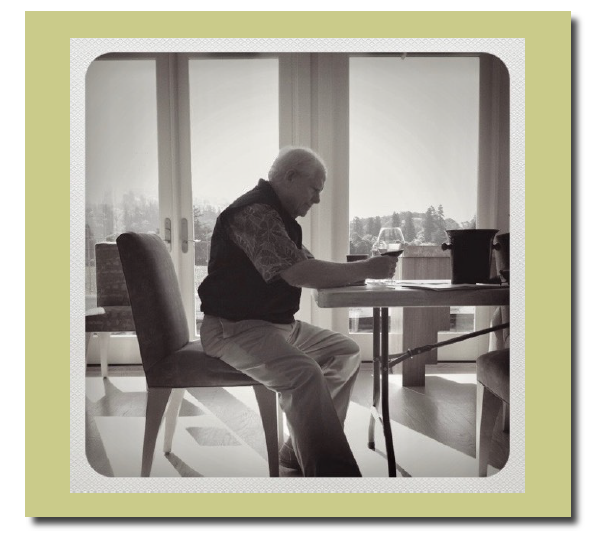 Since genetically we all possess disparate olfactory systems and palates and therefore taste wines differently, the wines reviewed and recommended in the PinotFile are only a starting point for your own exploration of Pinot Noir and Chardonnay. I want to lead you on the path of discovery, but I do not want to do the discovery for you. A Prince I might be, but mine is but one opinion.
I do have biases and a preferred style but I can appreciate the many faces of Pinot Noir. That said, here is my
personal stylistic preferences for domestic Pinot Noir:
Finding really good Pinot Noir today is not a difficult task because consistency and excellence have never been better. Falling in love with Pinot Noir is easy to do, although it can be a tempestuous affair. My advice is to get to know producers and winemakers and develop a bond and devotion. Establish a loyalty for and an insight into the wine you are drinking and you will amplify your drinking experience. Do not expect the same wine every vintage and relish in the spirit and character each vintage brings. Remember, the wine in your glass is crafted by the same composer, but it is never the same song. |